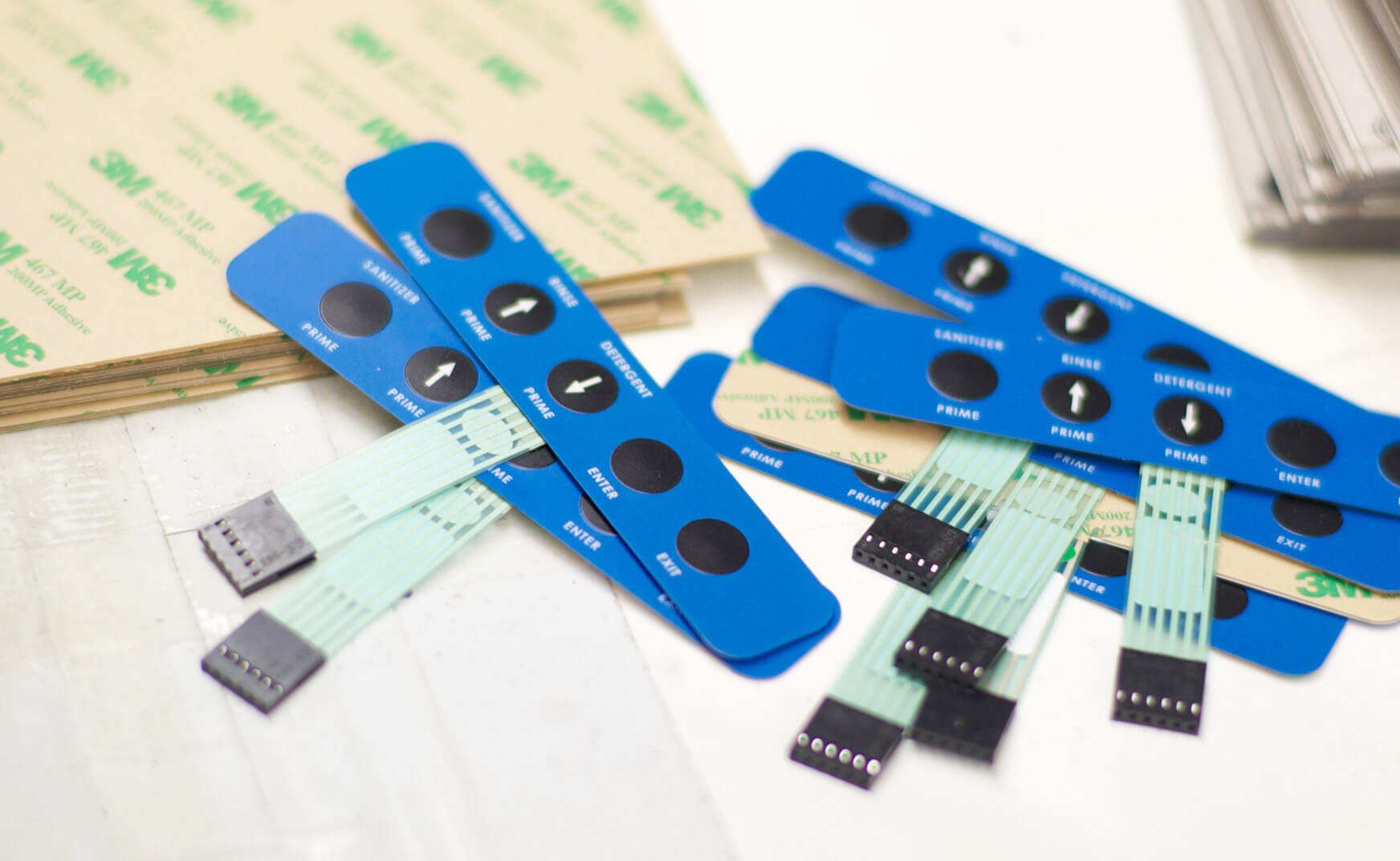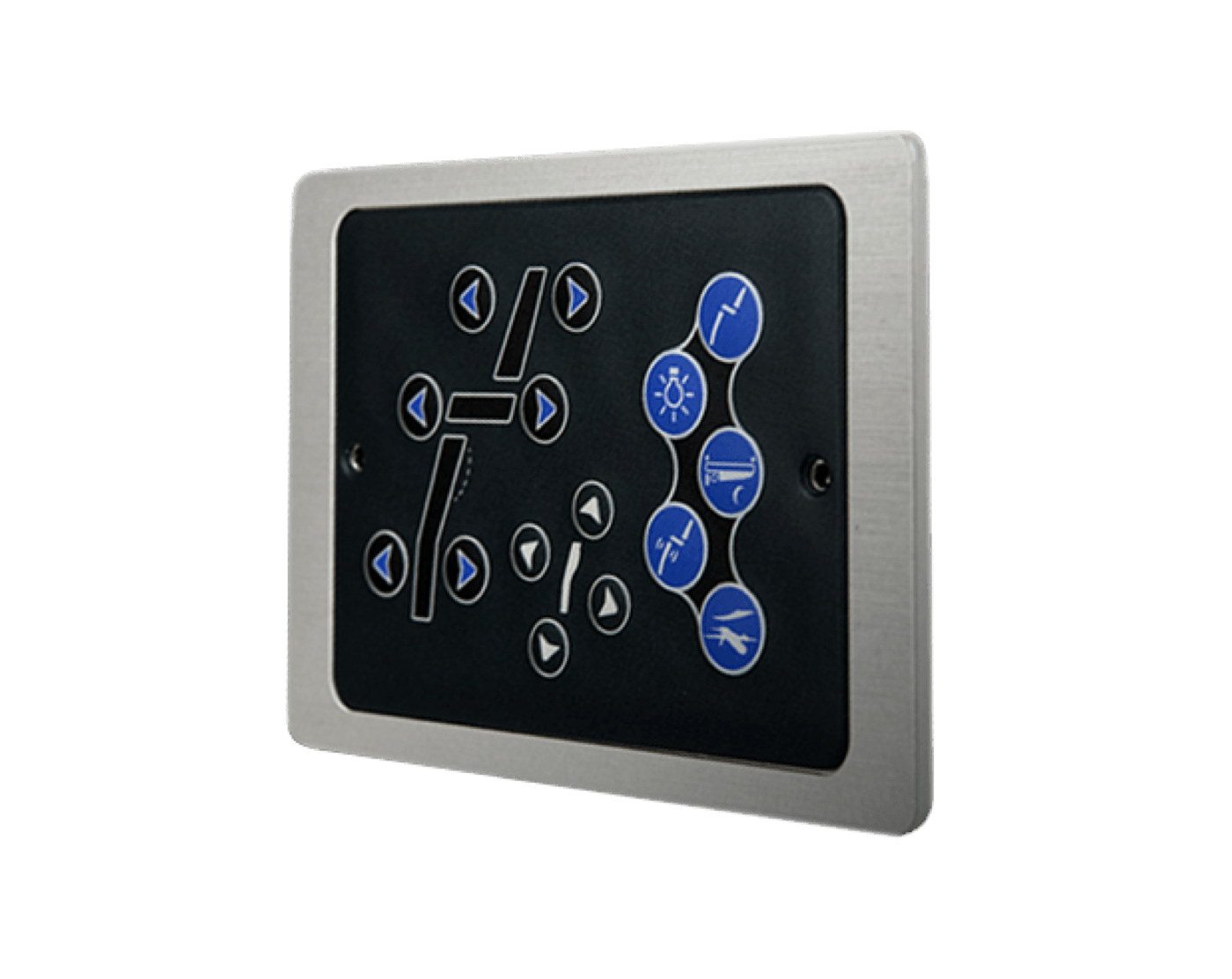Partnering with an experienced membrane switch manufacturer enhances your production process.
Partnering with an experienced membrane switch manufacturer enhances your production process.
Blog Article
All Concerning Membrane Change: Recognizing Its Style and Functionality
When you assume about the control user interfaces in contemporary tools, membrane layer buttons usually come to mind. Let's discover what sets membrane switches over apart from other control systems.
What Are Membrane Buttons?

Membrane layer switches can likewise be tailored regarding form, size, and graphics, allowing makers to develop one-of-a-kind user interfaces tailored to specific items. On the whole, membrane buttons play a significant duty in boosting customer experience across a large array of applications.
How Membrane Switches Over Job
When you press a trick on a membrane layer button, it turns on an uncomplicated yet efficient mechanism. The leading layer, often made of flexible product, pushes down onto a conductive layer below it. This action bridges the void between conductive traces, completing an electric circuit. As soon as the circuit shuts, it sends out a signal to the gadget's controller, which interprets your input.
You'll see that the responsive comments differs based upon the switch style, providing either a soft click or a much more obvious response. When you launch the trick, the membrane go back to its initial placement, reopening the circuit and quiting the signal. This procedure takes place almost immediately, ensuring a receptive customer experience.
Membrane switches are prominent as a result of their toughness and resistance to dirt and moisture, making them suitable for numerous applications, from house appliances to clinical devices. Recognizing this procedure assists you value their extensive use.
Key Parts of Membrane Layer Buttons
Recognizing the vital elements of membrane layer switches is fundamental for realizing their capability and layout. The protective layer guards versus environmental aspects and use, extending the switch's life expectancy. By understanding these components, you'll gain understanding into how membrane switches over operate and their importance in numerous applications.
Products Made Use Of in Membrane Switch Design
The performance and resilience of membrane switches over greatly depend upon the products utilized in their style. You typically experience polyester and polycarbonate as key substratums as a result of their excellent toughness and flexibility. These materials stand up to scratches and chemicals, making them excellent for demanding atmospheres.
The conductive layers frequently utilize silver or carbon, chosen for their integrity and conductivity. membrane switch manufacturer. Silver supplies premium performance, while carbon is an affordable choice. For the overlay, you could think about a matte or glossy surface, depending upon your visual demands and individual experience
Adhesives play a necessary duty too; they bond layers firmly and ensure long life. Make particular to select adhesives that withstand environmental aspects like temperature and moisture. Do not ignore the value of a great printing method for graphics, as it boosts both functionality and visual appeal. Choosing the best materials will guarantee your membrane layer button stands the test of time.
Style Factors To Consider for Membrane Buttons
While creating membrane buttons, it's essential to consider different aspects that affect their performance and individual experience. Beginning by concentrating on the design and button dimension; make sure they're intuitive and simple to browse. Consider the tactile feedback you want to give-- here are the findings will individuals need a visible click or a softer touch? Additionally, think of the products you'll make use of, as they'll impact toughness and appearances.
Don't ignore the visuals layout; clear labeling and color comparison are substantial for presence. Verify your design accommodates environmental elements, like wetness or temperature variations, which might affect performance. Ultimately, bear in mind the significance of screening prototypes with real individuals to collect responses and make needed modifications. This repetitive process helps you view refine the layout, validating it satisfies both functional and visual needs properly. By very carefully taking into consideration these aspects, you'll create a membrane switch that enhances use and fulfillment.
Applications of Membrane Buttons
Membrane layer switches are flexible elements discovered in numerous applications, from commercial equipment to consumer electronic devices. You'll see their effect in devices that require long lasting interfaces and in gadgets that benefit from streamlined designs. Understanding these applications aids you value the functionality and functionality of membrane layer switches in everyday modern technology.
Industrial Tools Use
When you're wanting to enhance the performance of commercial tools, membrane layer buttons use a trustworthy option that incorporates toughness with user-friendly layout. These buttons are best for extreme settings, offering resistance to dust, dampness, and chemicals. You'll locate them in control panels for producing devices, a/c systems, and medical gadgets, where accuracy and responsiveness are vital. Their low profile indicates they fit seamlessly into various devices, conserving valuable room while maintaining simplicity of usage. With adjustable graphics and backlighting choices, you can produce an intuitive interface for operators, boosting effectiveness and safety. And also, their long life expectancy minimizes maintenance prices, making them a smart financial investment for your industrial applications. Accept membrane buttons to streamline your procedures and boost total performance.
Customer Electronics Combination
In the domain name of customer electronic devices, membrane layer buttons play a necessary duty in boosting individual communication and tool functionality. You'll locate them in tools like microwaves, remotes, and gaming consoles, giving a smooth way to connect with technology. Their streamlined style permits easy combination into different products, making controls instinctive and easy to use. With their ability to include graphics and backlighting, you can take pleasure in a modern aesthetic that matches the tool's general appearance. Membrane switches additionally ensure longevity and resistance to dirt and wetness, extending the life expectancy of your electronic devices. By picking membrane buttons, you enhance not just the functionality yet additionally the design of your devices, making everyday interactions smooth and satisfying.
Benefits and Drawbacks of Membrane Switches
While membrane layer switches provide an array of benefits, they likewise come with some disadvantages that you need to consider. One significant advantage is their portable layout, making them suitable for space-constrained applications.

Nonetheless, there are disadvantages. Membrane layer buttons can have a much shorter lifespan compared to mechanical buttons, particularly under hefty use. They can likewise be much less tactile, which might affect user feedback during procedure. If damaged, fixing have a peek at this website them can be tough and typically requires complete replacement. Inevitably, their sensitivity to extreme temperatures and ecological problems might limit their efficiency in particular settings. Balancing these advantages and disadvantages will certainly assist you determine if membrane buttons are the best fit for your job.
Frequently Asked Inquiries
How Lengthy Do Membrane Layer Changes Commonly Last?
Membrane switches commonly last between 5 to 10 years, depending upon use and ecological problems. You'll desire to examine factors like wear, exposure to wetness, and temperature level changes to gauge their durability effectively.
Can Membrane Switches Over Be Personalized for Particular Layouts?
Yes, you can personalize membrane layer switches to fit details designs (membrane switch manufacturer). You'll have the flexibility to pick shades, shapes, and formats that match your task's requirements, ensuring they blend effortlessly with your total visual
What Is the Price Range for Membrane Layer Switch Production?
The price variety for membrane layer button production commonly drops in between $1 and $10 each, depending on factors like design complexity, amount, and materials. You can get quotes from manufacturers to locate the most effective option.

Are Membrane Layer Changes Waterproof or Immune?
Membrane buttons can be designed to be water resistant or immune, depending upon products used and building approaches. If you require them for damp settings, ensure you specify those requirements throughout the design process.
How Do Membrane Switches Over Contrast to Traditional Switches?
Membrane layer switches are usually thinner and more versatile than typical buttons, using a sleek design. They're frequently much easier to clean up and integrate, but might not supply the responsive responses you're utilized to with mechanical choices.
Verdict

Report this page